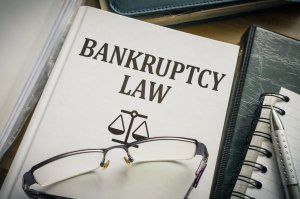
THE SUPREME COURT UPDATES BANKRUPTCY RULES
Last year, the Supreme Court approved several changes to bankruptcy results surrounding the administration of consumer bankruptcy cases as well as Chapter 13 cases. It took Congress’s rules committee several years to draft and debate the rule amendments, which took effect Dec. 1, 2017.
Let’s take a look at each change.
New Bankruptcy Rules
 The Supreme Court Updates Bankruptcy Rules
The Supreme Court Updates Bankruptcy Rules
The following rule amendments help explain why they are important to financial institutes:1
Model Chapter 13 Plan – this new plan allows the person to opt-out in order to perform a local bankruptcy instead. Under the new plan, an Official Form 113 must be completed and filed, unless there’s a local form that has been adopted and is in compliance with Rule 3015.1. Forms that do not conform with Rule 3015.1 will be rejected.
Getting here – The national Chapter 13 plan has been considered by the judicial conference since 2011. The original plan didn’t have an “opt-out mechanism” like the one in the newly amended rules. Furthermore, the courts recognize that more jurisdictions have opted out in order to use their own localized Chapter 13 form instead.
What Must Local Forms Provide? – Rule 3015.1 establishes a few requirements that local forms must have. The new rules states that Chapter 13 plans must be reviewed by creditors. Financial institutions are encouraged to be familiar with both localized Chapter 13 forms and the new national form.
Rules About Claims filing – It is now required that a secured creditor file a proof of claim. Failure to file a proof of claim doesn’t void the creditor’s lien either.
Changes to Rules – Proof of claim for filing a voluntary Chapter 7, 12, or 13 case must be filed no more than 70 days after order for relief. (The old ruled allowed for 90 days.)
Exception to Complying With New Proof of Claim Bar Date – A motion filed by a creditor before or after the claim file deadline, it is within the court’s right to extend the deadline by no more than 60 days, but only if the court determines there was insufficient notice, such as the debtor failing to file creditors names and addresses in a timely manner, or notice was mailed to the creditors at distant or out-of-the-country address.
Rule Change to Claim Objection – The designated person on the creditor’s proof of claim must now send any claim objection and notice by first-class mail. Claim objections to an insured depository institution should be handled by certified mail and addressed to the institution’s designated officer. Mandatory hearings for claim objections or no longer required.
Determination of Amount of Secured Claim – Requesting a determination of an amount of a secured claim can be done by filing a motion, through a claim objection, or in a Chapter 12 or 13 plan. The exception is for a government unit, which cannot use Chapter 13 plan to determine the amount of the secured claim.
New Rules Pertaining to Avoidance of Liens in Exempt Property – The request to avoiding a lien can now be done using either Chapter 12 or 13 plan.
New Rule Pertaining to Order Declaring Lien Satisfied – Under the new rules, a debtor can now request an order declaring that a secured claim is satisfied, and lien has been released.
Have you weighed your options and can find no way out of your financial predicament other than filing for bankruptcy? If so, contact a West Minster Bankruptcy with Garcia & Gonzales, P.C. to learn more how our legal team can help you make a fresh start.
We’ve helped thousands of people successfully resolve their debt problems since 1977. Call today, so we can set up a free, no obligation initial consultation to meet and discuss your case. Call today or email our firm using the form at the side of the screen.
___________________________________________________________________
1“New Bankruptcy Rules Effective December 1, 2017, Will Impact Financial Institutions” published in Client Alert, July 2017.
